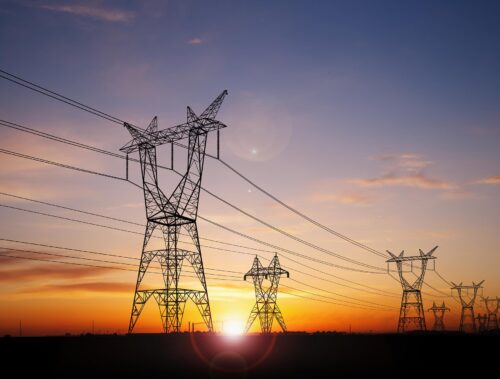
The Ongoing Struggle to Join PJM’s Grid
In PJM, Gigawatts of Clean Energy Have Received Approval to Connect to the Grid. What’s the Holdup?
The clean energy transition is rapidly underway in PJM, the largest electric grid operator in the United States. This regional transmission organization (RTO) that coordinates the wholesale electricity system in the Mid-Atlantic region has an unprecedented 258 GW of projects waiting in its interconnection queue to be studied and connected to the grid. That’s 1.4 times the amount of currently installed capacity in PJM, and 98 percent of these projects (by nameplate capacity) are carbon-free resources.
Beyond this headline statistic, however, is a lot to unpack with respect to the different stages of development and other characteristics of these projects. For example, as of last month, 38 GW of projects had received permission from PJM to connect through interconnection service agreements (ISAs) but have yet to start generating power. PJM has recently cited these projects as evidence of factors outside of the queue process that are delaying projects from coming on line.
These projects that have signed ISAs but are not yet in service represent a large near-term addition of mostly carbon-free generation that would bolster reliability and progress toward decarbonization commitments in the region. Therefore, understanding the reasons behind their delays is critical.
From a project development perspective, there are several additional stages of development that must be completed after receiving an ISA, from securing financing to obtaining site-specific permits, which helps explain why projects take additional time to come on line. But, within these stages of development, are projects facing excessive delays or obstacles that threaten their successful completion? To shed more light on this question, I analyzed queue data from PJM for these 38 GW of projects and share the trends that I found below, based on technology, geography, and development status. The complete analysis can be found in a link at the bottom of this post.
The two leading types of generation technology among projects with signed ISAs not yet in service are solar (60 percent) and natural gas (24 percent) (Exhibit 1). Compared to the 258 GW of active projects in the queue (i.e., projects that have not yet received an ISA), natural gas is significantly overrepresented among projects with signed ISAs, making up only 2 percent of active projects, while more nascent technologies such as offshore wind and storage are underrepresented. This illustrates the ongoing shift in generation technology toward a growing set of carbon-free resources, fueled by policy preferences, customer demand, and changing economics — particularly now with the incentives provided by the Inflation Reduction Act.
Projects with signed ISAs are not uniformly distributed within the PJM region (Exhibit 2). Three-quarters of the 38 GW of projects are located in just five states — Ohio, Virginia, Illinois, New Jersey, and Pennsylvania. In particular, 71 percent of the solar capacity is located in Ohio, Virginia, and Pennsylvania. This could point to potential geographies where local or state permitting processes may be creating barriers for projects to come on line, as projects do not need to have all permits secured before obtaining an ISA.
When can we expect these projects to connect to the grid and start generating power? A full 83 percent of projects (by nameplate capacity) have yet to pass their projected in-service date, which is updated by the developer at the time of ISA signing. Roughly half of all capacity is aiming to be operational by the end of 2023, with a median projected in-service date of February 28, 2024 (Exhibit 3). Of the 17 percent of projects that have passed their projected in-service date, natural gas projects are 70 percent more likely to be past projected in-service dates compared to all other types of generation (34 percent of natural gas capacity vs. 20 percent of clean energy capacity, on average). This could, in part, be due to the fact that natural gas projects have earlier projected in-service dates than other types of projects (Exhibit 4).
This data reveals only part of the picture — conversations with PJM and with developers of these projects add important additional color. Based on preliminary discussions I’ve had, there are a complex array of development hurdles that can influence when projects become operational after receiving their ISAs. These include supply chain constraints on components such as solar panels and transformers, local and state permitting challenges, and maintaining project finance and offtake agreements. Working to alleviate these obstacles will be critical to smoothing the path from signing an ISA to achieving commercial operation.
It is important to recognize, however, that these challenges are interrelated with the struggles many developers have experienced as they navigate lengthy interconnection queues. The queue processing timeframes that these 38 GW of projects have faced — almost five years, on average — could have exacerbated their vulnerability to these other obstacles, underscoring the ultimate importance of a streamlined, speedy interconnection process. Moreover, processing times are not uniform across technology. Out of the 38 GW of projects I analyzed, natural gas projects received their ISA an average of two years before clean energy projects (Exhibit 5). This may help to explain why in 2022, solar projects had a lower completion rate than natural gas projects (38 percent for solar, 63 percent for natural gas), among those projects with projected in-service dates for that year. Of the capacity that came on line in 2022, 75 percent was natural gas and only 25 percent was solar. Importantly, most of the natural gas facilities studied as part of this analysis were uprates to existing facilities, which could explain their shorter ISA wait times.
PJM’s recently initiated interconnection reforms are an important start but are by no means the final step. Developers, utilities, states, and PJM must continue to work together to identify and implement further process changes that enhance efficiencies in interconnection to meet this region’s rapidly growing clean energy demand.
Download full analysis here.